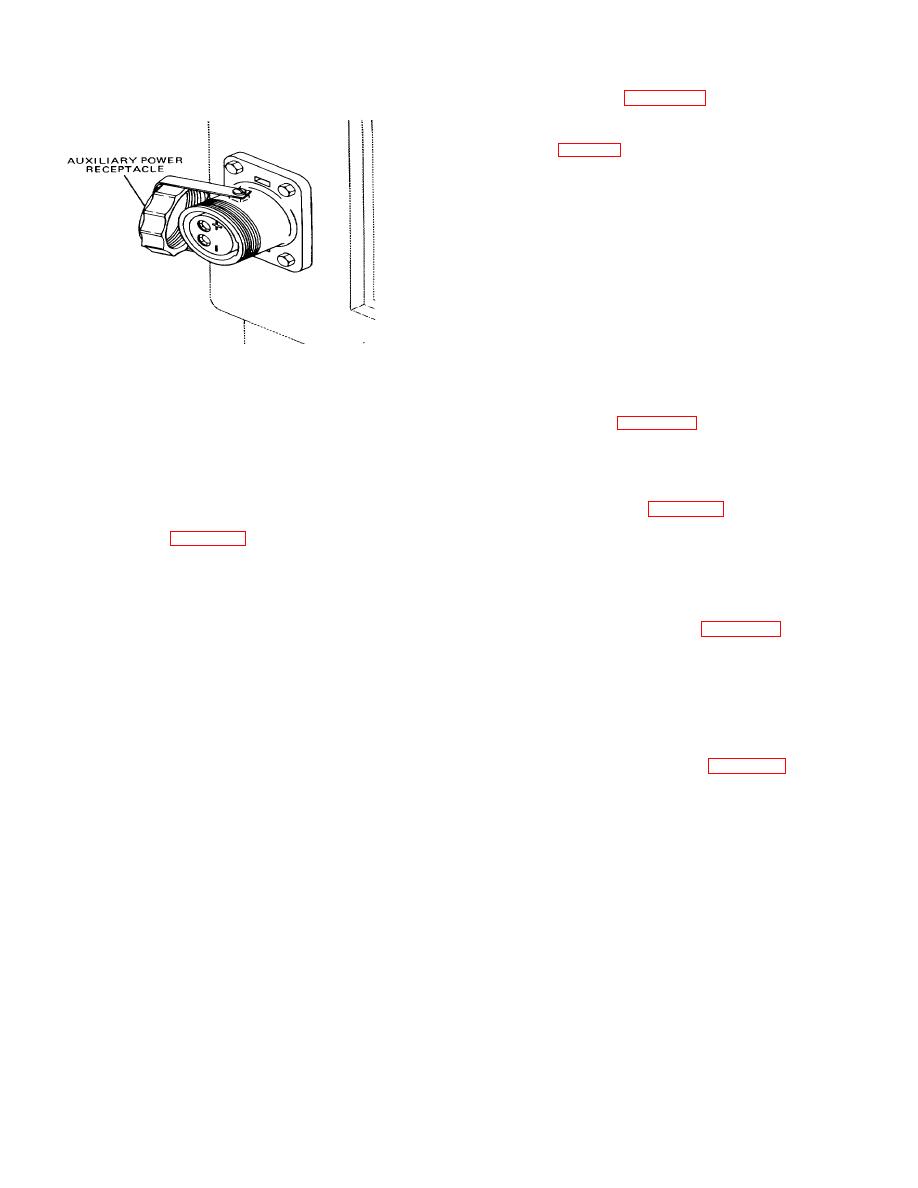
| Tweet |

Custom Search
|
|

|
||
 TM 9-8000
b. Heater Core (Fig. 17-30). The heater core is a
component that transfers heat from the engine coolant to
the passenger compartment. Its construction is similar to
a radiator (para 9-6), except that it is on a much smaller
scale. The heater core fits into the heater unit and is
connected to the engine's cooling system by two hoses
called heater hoses. The connection to the engine's
coolant passages is made at strategic points that will
cause the engine's water pump to force a constant
supply of engine-heated coolant through the heater core.
The heater core feed line is fitted with a control valve that
can be controlled by the operator. The purpose of the
valve is to open, restrict, or shut off the coolant flow
through the heater core to control the heater
temperature. The temperature control valve can be either
cable operated, or it can be operated by a vacuum-
Figure 17-28. Auxillary Power Receptacle
actuated diaphragm that receives its vacuum supply from
the engine.
dures because it is necessary only to unscrew the
receptacle cap and plug in the connector to make the
c. Mode Door (Fig. 17-29). The mode door selects
connections. No disconnecting and reconnecting of the
the heater unit's mode of operation. As the door is
battery cable is necessary.
moved through its full travel, air is ducted through the
heat, vent, or defrost outlets.
17-19.
Heater,
Defroster,
and
Ventilation
Mechanisms.
d. Fresh-Air Door (Fig. 17-29). The fresh- air door
selects either a fresh-air or interior-air (recirculate) intake
a. General (Fig. 17-29). The heater, defroster, and
for the heater unit.
ventilation mechanisms usually are combined into one
unit to make up a complete system. The unit, which is
e. Door Controls. The heater control doors can be
called a heater unit, consists of a chambered box
controlled two different ways:
containing a heater core (para 17-19b) and control doors
to allow the operator to select the desired mode of
operation. The outside of the box contains openings for:
can be operated by cable from the instrument panel.
Cable-operated doors usually have the advantage of
(1) Outside air intake, so that fresh air can be
crossover operation. This means that the fresh-air door,
drawn into the vehicle.
for example, can be positioned halfway between the
fresh air and recirculate intakes, allowing a blend of fresh
(2) Interior air intake, so that air can be
and recirculated air.
recirculated.
(3) Defroster outlets, so that forced air can be
can be operated by actuators that are powered by a
provided to clear the windshield.
vacuum supply from the engine. This vacuum supply is
routed to the actuators by rubber hoses that first pass
(4) Heater outlets, so that heated air can be
through control valves in the instrument panel. The
provided, usually at floor level.
control valves usually are built into a master control
switch that is controlled by the operator. The advantage
(5) Ventilation outlets so that air can be forced
to this control system is that it is much easier to route the
into the passenger compartment at instrument panel
rubber supply hoses in the tight confines of the
level. An electric blower motor also is combined with this
instrument panel area than it is to route control cables
unit
to
provide
air
movement.
that
will
bind
if
kinked.
TA233639
17-22
|
||
 |
||